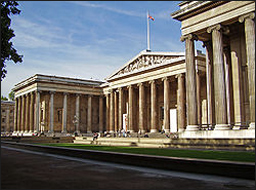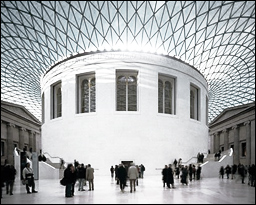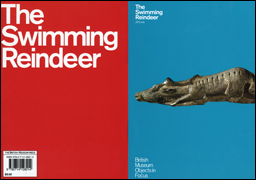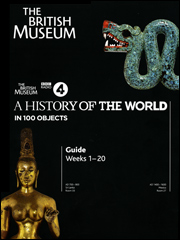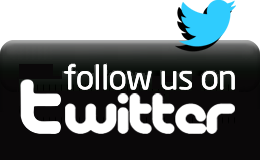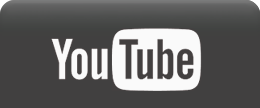 |
 |
The British Museum - Introduction |
The British Museum in London has a remarkable collection of manmade objects - from early tools to great works of art.
It was founded in 1753, the first national public museum in the world. From the beginning it granted free admission to all 'studious and curious persons'. Visitor numbers have grown from around 5,000 a year in the eighteenth century to nearly 6 million today.
The origins of the British Museum lie in the will of the physician, naturalist and collector, Sir Hans Sloane.
Over his lifetime, Sloane collected more than 71,000 objects which he wanted to be preserved intact after his death. So he bequeathed the whole collection to King George II for the nation in return for a payment of £20,000 to his heirs. The gift was accepted and on 7 June 1753, an Act of Parliament established the British Museum.
The Department of Prehistory and Europe in the British Museum is responsible for collections that cover a vast expanse of time from the earliest human tools in Africa and Asia two million years ago to the art and archaeology of Europe from the earliest times to the present day, including the history of Britain under Roman occupation.
Curators in the department are experts on a wide variety of subjects from areas such as Palaeolithic Archaeology (Old Stone Age) in Europe and around the world, Neolithic (New Stone Age), Bronze Age and Iron Age Archaeology in Europe and Roman Britain. Specialists cover many aspects of Medieval, Renaissance and Modern European culture, including twentieth century design from North America.
Jill Cook, Deputy Keeper, Palaeolithic and Mesolithic material, is a member of the Bradshaw Foundation’s Advisory Board. In 2010 she published 'The Swimming Reindeer' based on one particular ancient artefact of the Museum.
 |
The Swimming Reindeer |
Publication details:
'The Swimming Reindeer' 2010,
The British Museum Press,
ISBN 978-0-7141-2821-4, £5.00
The sculpture known as the ‘Swimming Reindeer’ was created at least 13,000 years ago and shows a male and female reindeer with their heads raised and legs extended. Carved from the tip of a mammoth tusk, the depiction is remarkable in its naturalism, conveying movement and displaying a hunter’s knowledge of anatomy.
Discovered in 1866 as two separate pieces, the sculpture was acquired by the British Museum in 1887. The fragility of the connection between the two halves means they do not form a practical object but rather a masterpiece of figurative art, whose real significance to the people who created it remains a mystery.
Jill Cook has chosen this artefact - this work of art - because she believes it offers us a glimpse into an Ice Age society and its unexplored world of art. Her publication 'The Swimming Reindeer' details the discovery and dating of the piece, and explores the artistic techniques used to create it and its importance both then and now.
 |
A History of the World in 100 objects |
The Swimming Reindeer is featured in A History of the World in 100 objects – presented by the British Museum & BBC Radio 4 - in the first part: Making us human.
Making Us Human (2,000,000 - 9000 BC)
Human life began in Africa. Here our ancestors created the first stone tools to chop meat, bones and wood. It is this ability to make objects that allowed humans to adapt to a multitude of environments and spread into the Middle East, Europe and Asia. From about 40,000 years ago, during the last Ice Age, humans created the world’s first representational art.
The Ice Age also caused the world’s sea levels to fall exposing a landbridge between Siberia and Alaska. This allowed humans to reach the Americas (
Journey of Mankind - The Peopling of the World) for the first time and rapidly spread across the continent.
THE OBJECTS INCLUDE:
• Olduvai stone chopping tool, Tanzania. 1.8 - 2 million years old
• Olduvai handaxe, Tanzania. 1.2 - 1.4 million years old
• Swimming Reindeer, France. 13,000 years old
• Clovis spear point, USA. 13,000 years old.
'A History of the World in 100 objects'
The Book of the Series
Based on the landmark BBC Radio 4 series, British Museum Director Neil MacGregor tells an epic history of humanity over two million years through 100 manmade objects from the Museum’s collection - from early tools to great works of art.
The book is beautifully illustrated with over 200 integrated colour images. Available in the Museum shops and
www.britishmuseum.org/shop
Neil MacGregor on the story of the Swimming Reindeer, a carving dating back 13,000 years.
Listen on the BBC iPlayer
 |
Shoreditch |
Selecting artefacts for the first part of 'A History of the World in 100 objects - Making Us Human' would not have been an easy task for British Museum Director Neil MacGregor. This was highlighted on a recent Bradshaw Foundation meeting with Jill Cook at Shoreditch, where much of the British Museum’s reserve collections - thousands of unique prehistoric tools and works of art - are carefully and methodically catalogued and stored.
Like us on Facebook & Follow us on Twitter to receive news & updates:
→
The British Isles Prehistory Archive→
The British Museum→
Bradshaw Foundation
